If you wander around Japan for a while you will realize that there are a lot of smaller shrines which portrait a fox statue with a red cape. These are Inari shrines and there are around 30000 of them with the Fushimi Inari as the head shrine (inari.jp, accessed: 14.10.2019).
My Trip:
The nearest station would be the Inari station. The mountain area is freely accessible without any opening hours. You can try to get there as early as 5 am to enjoy a quite hike until the first tourists arrive. When i took the pictures presented below i arrived at the mountain at 05:45 am and already encountered at least 10 other early access hikers.
The hike of the 233 m tall mountain is quite straight forward. After around 30 minutes I reached an intersection where a nice chilling morning view was presented to me. Since this observation spot is facing West i imagine this is also a nice and easy to access sunset viewing spot. It took me another 30 minutes to reach the top – passing through many many many Tori gates. On my way back i somehow made a wrong turn and ended up at the Araki Shrine. The hike was very pleasant and a nice morning activity however i believe it could get quite stressful at rush hour times since the width of the tori gates, which determine the throughput of people. is only wide enough for 2 lanes. And since this is a very desireable selfie spot bottlenecks will most likely emerge
Some background information:
The Fushimi Inari Shrine was first documented as early as in the 8th century belonging to a clan who originally came from Korea. 3 gods were enshrined here and were collectively called Inari. One of them was the goddess of agriculture which might be why today Inari is characterized as god of rice. Over the years the popularity of the Inari shrine spread out, first to other neighboring clans then by merchants of developing cities throughout Japan.
The depicted foxes are thought to be Inari’s messenger although the god of Inari is also believed to have the form of a white fox itself. The red cape is being added as it is believed to chase out evil demons.
People pray at an Inari shrine in hope of household wellbeing, business and general prosperity. The Tori gates along the trail are actually donations by people or companies and are inscribed at each gate. The costs starts at around 400000 Yen (3500 €) and can go up to over one million Yen. This might sound much but if you see your competitor having a Tori gate you want to improve your own luck as much as possible as well.

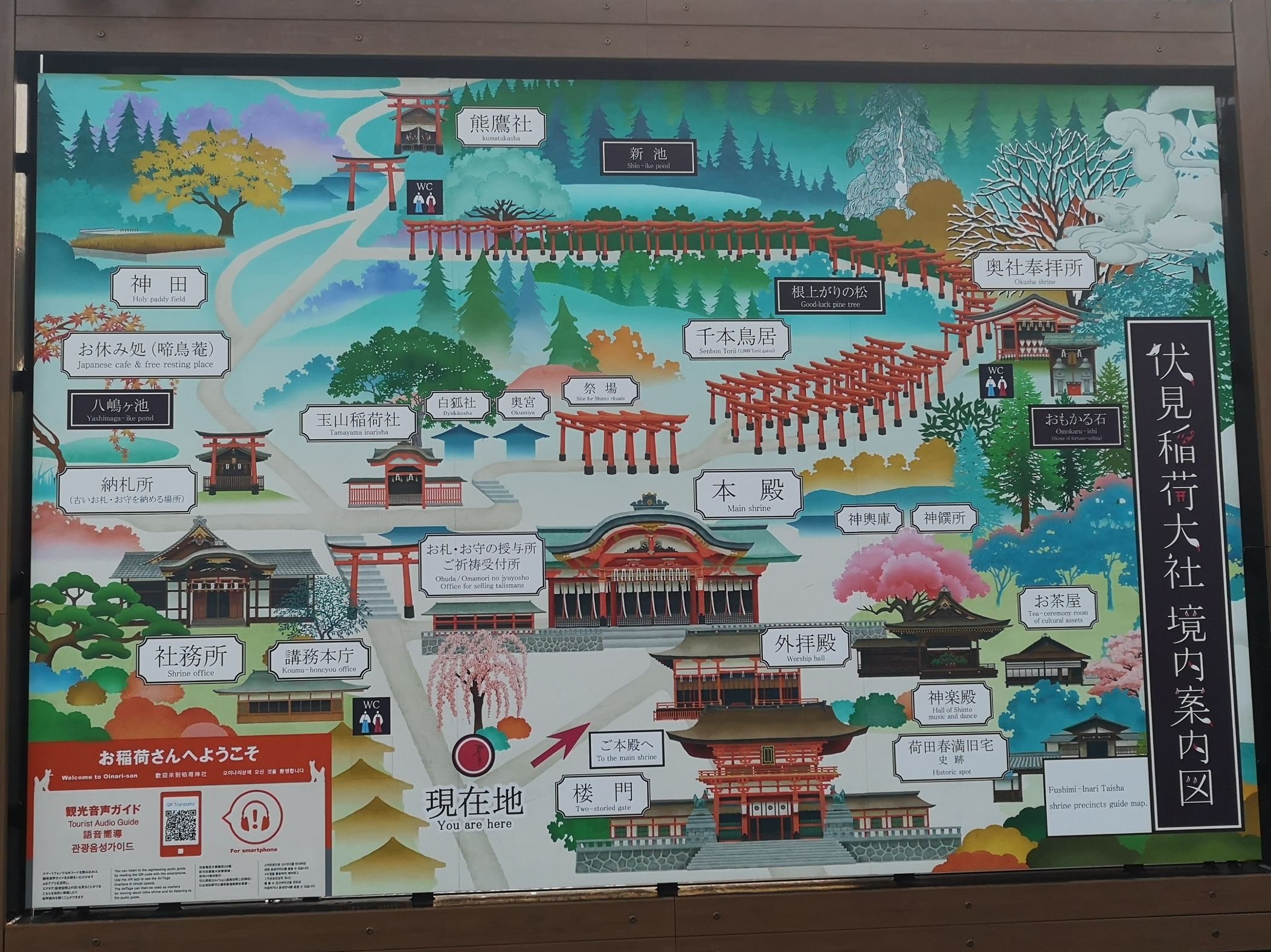
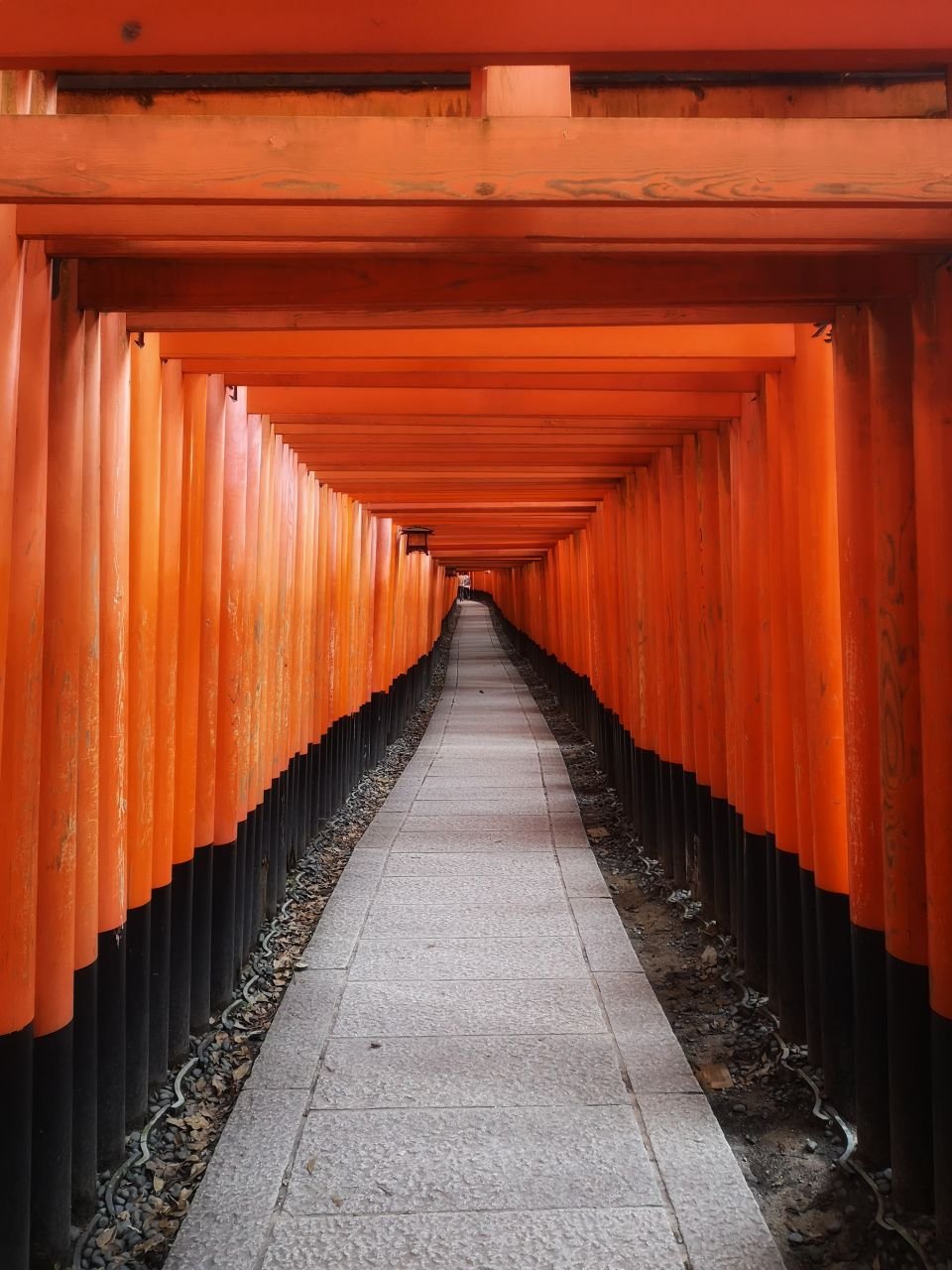
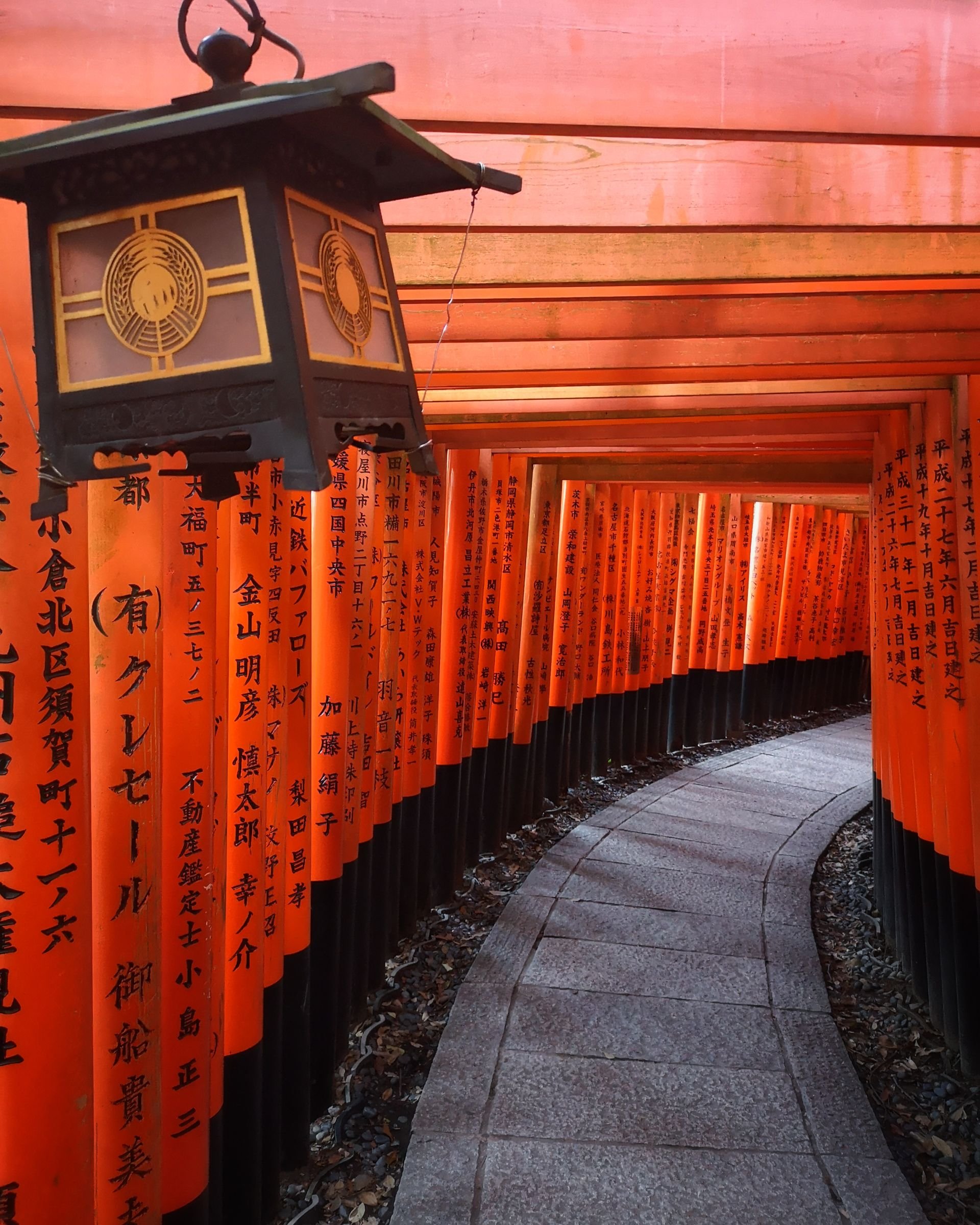
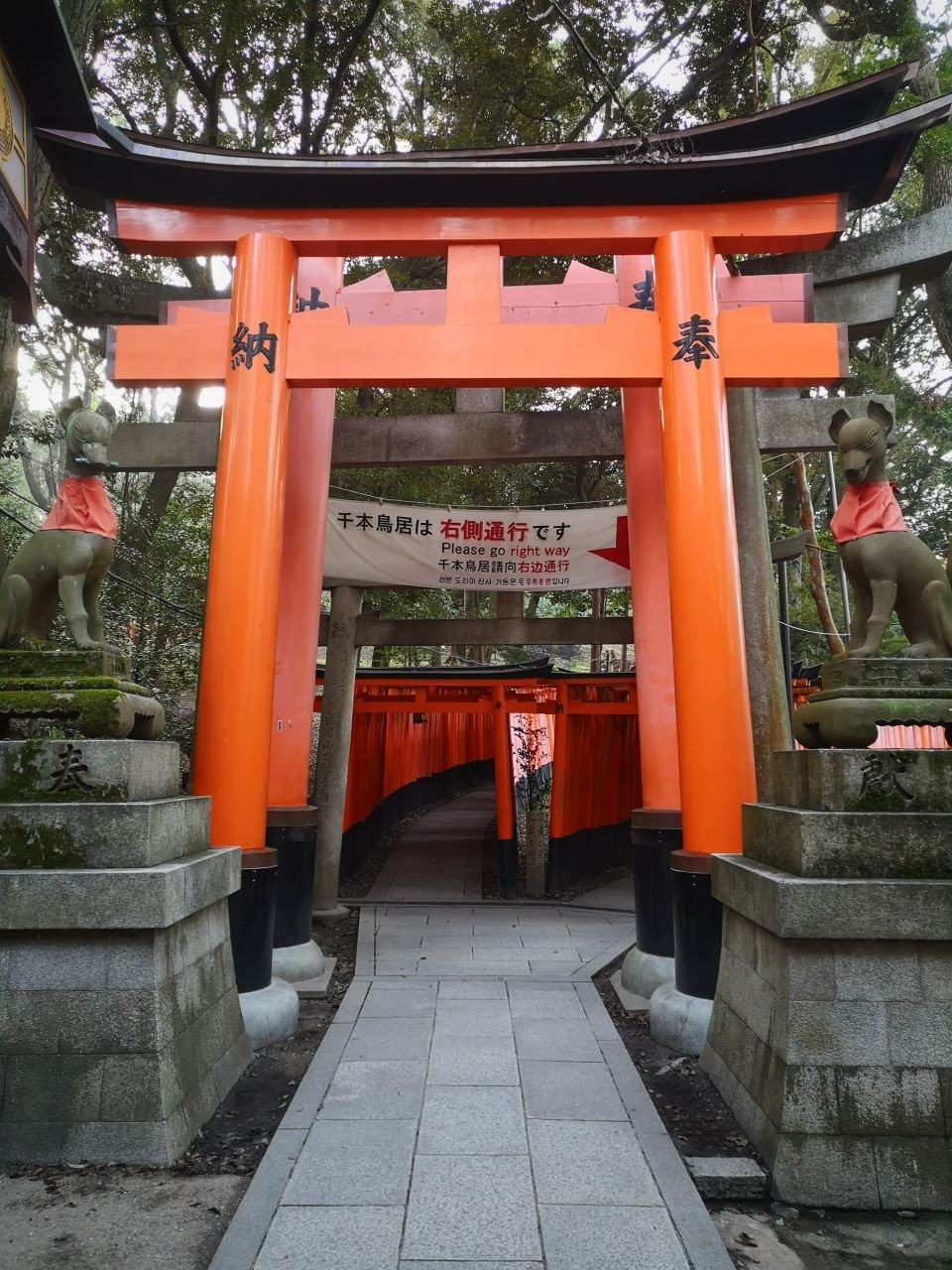

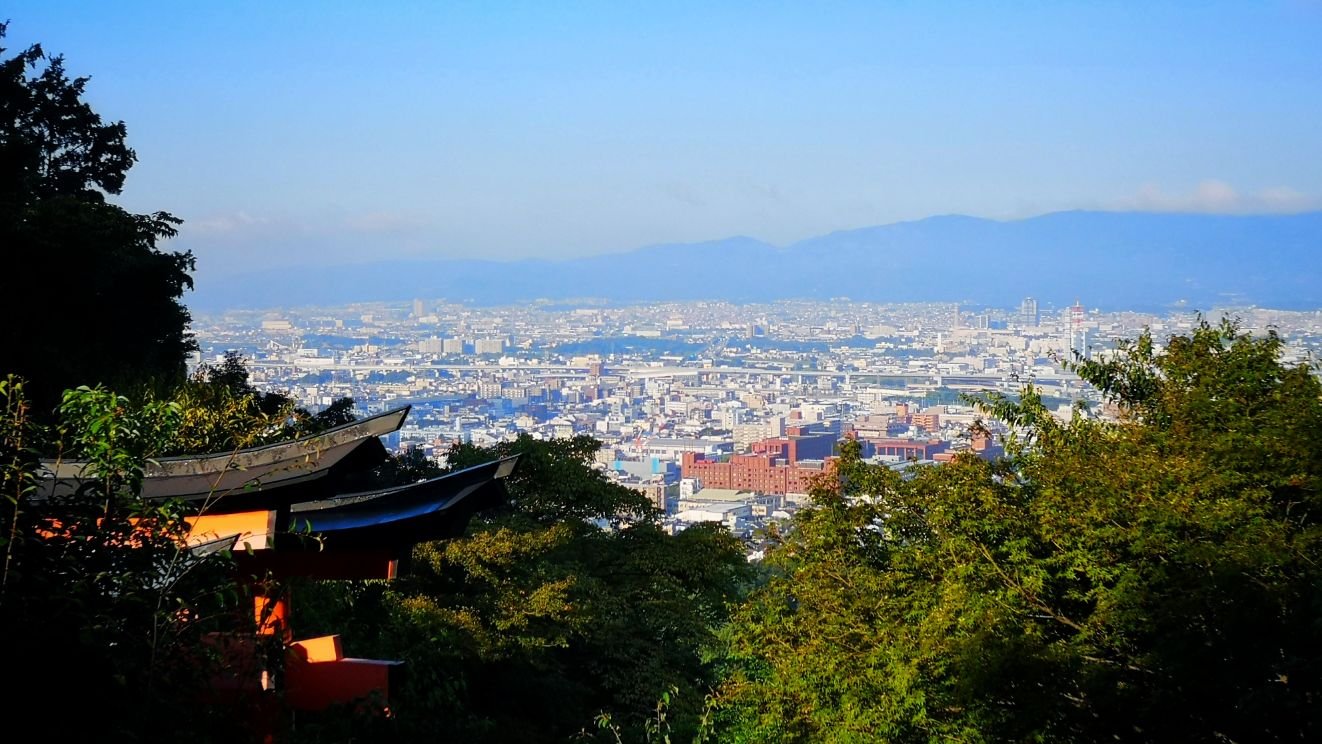
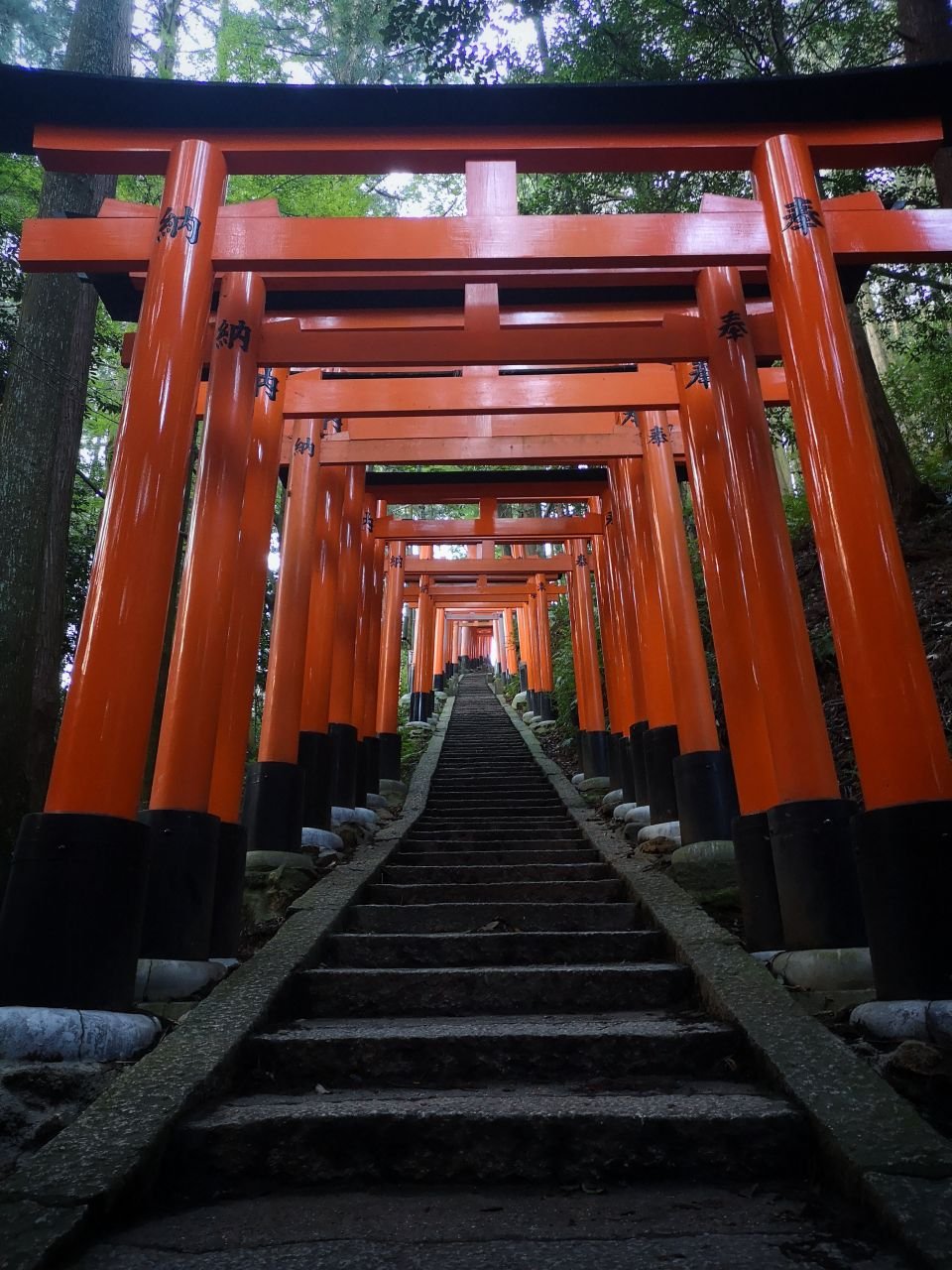
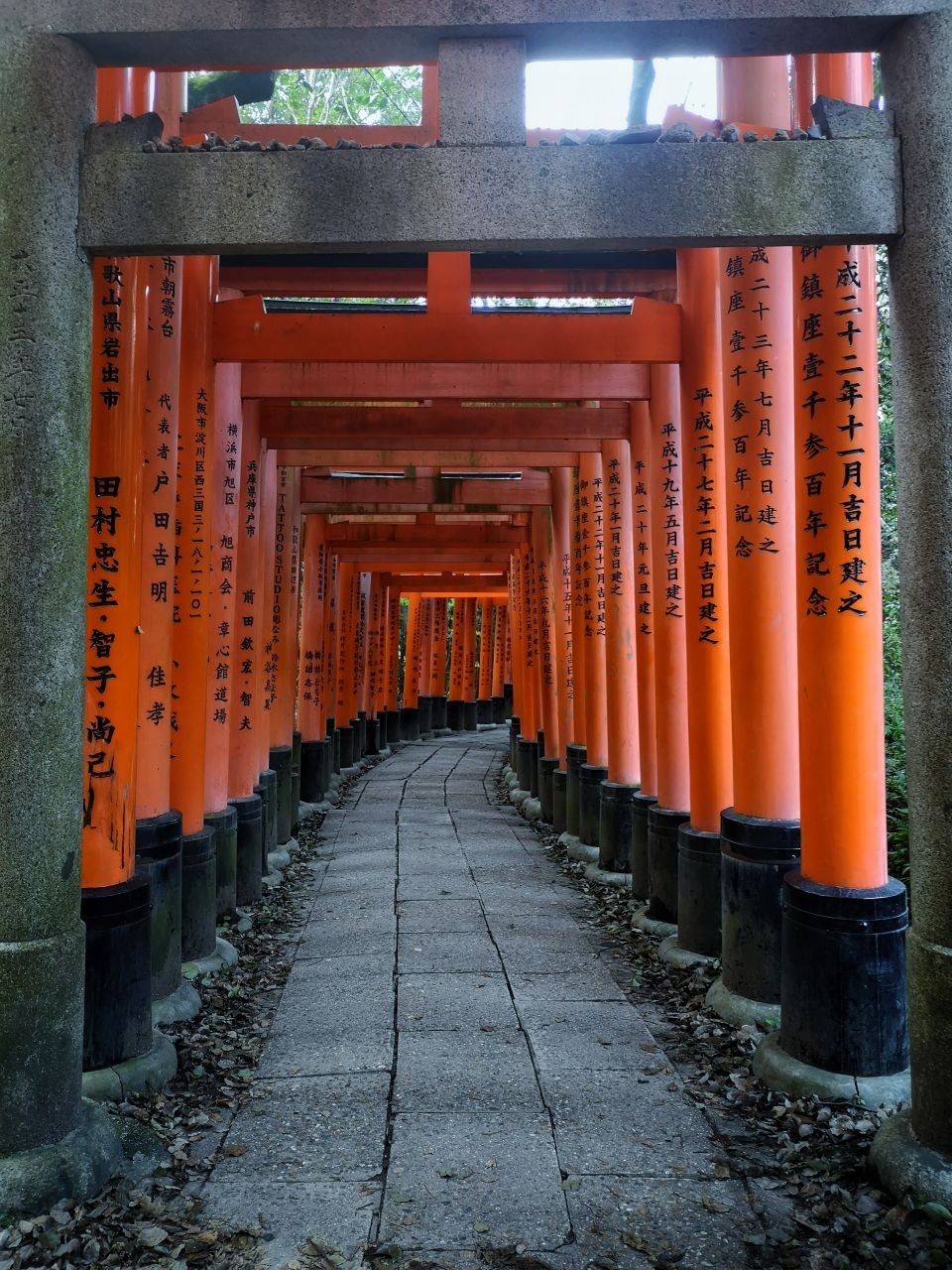
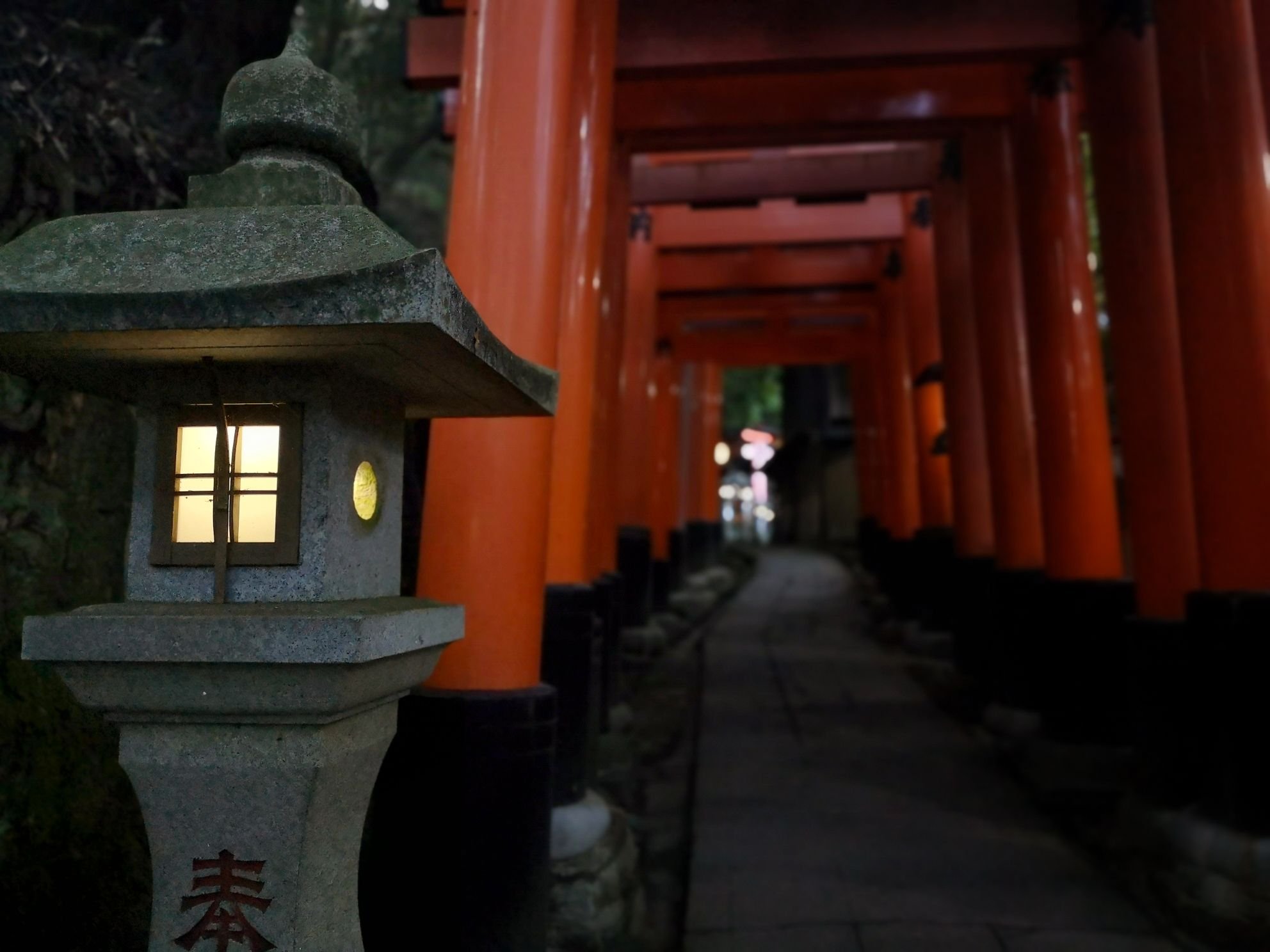
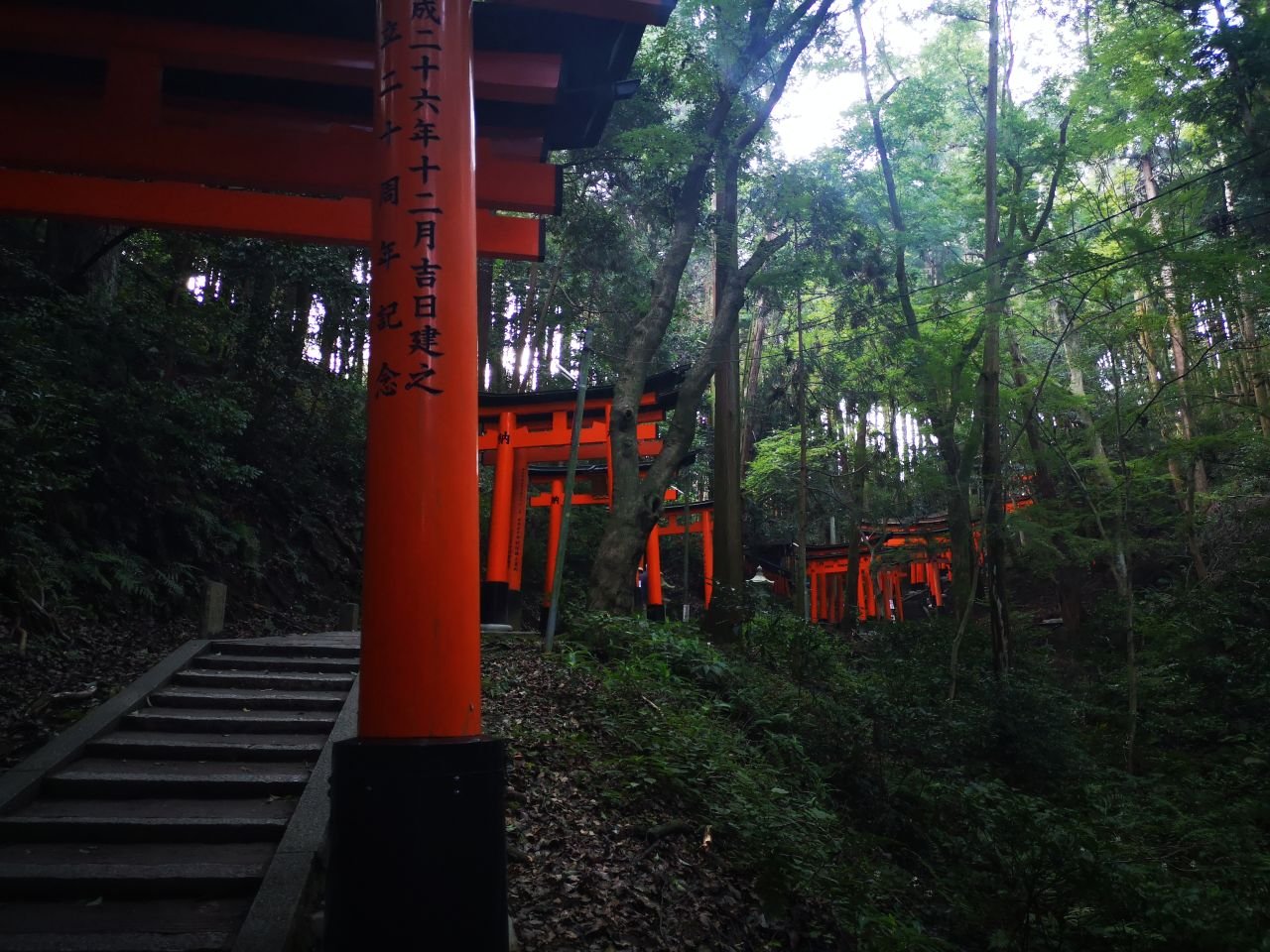
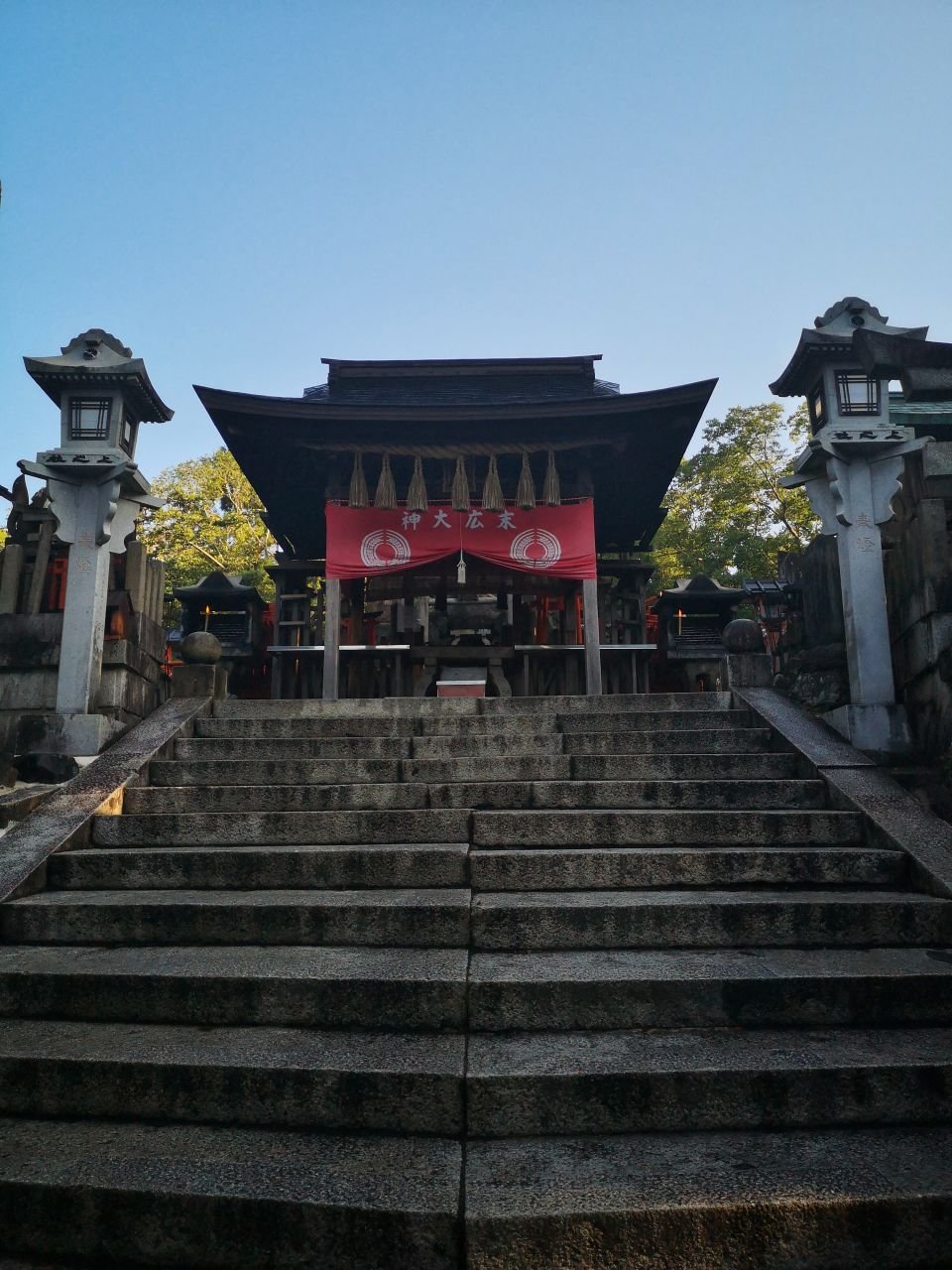

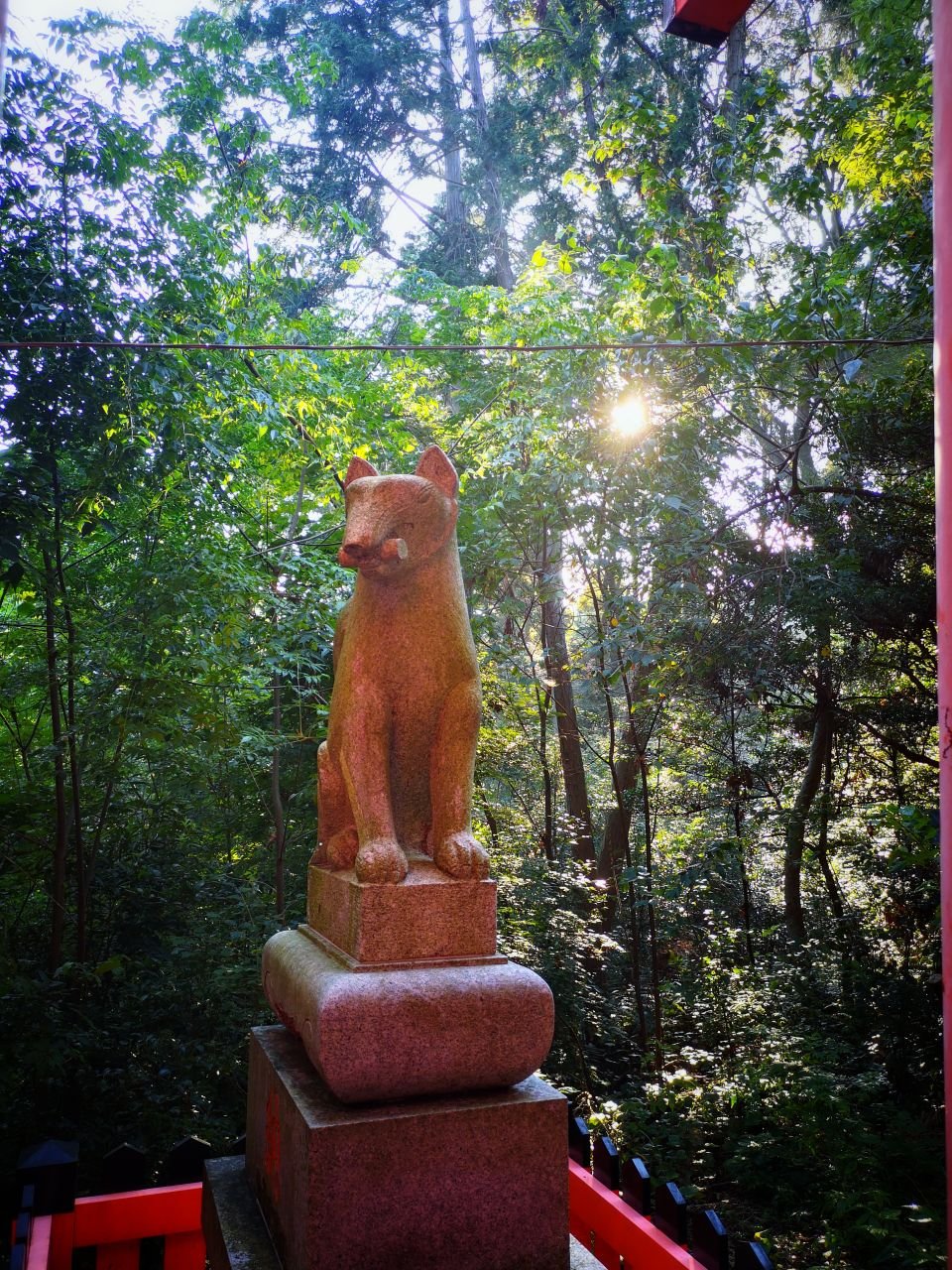
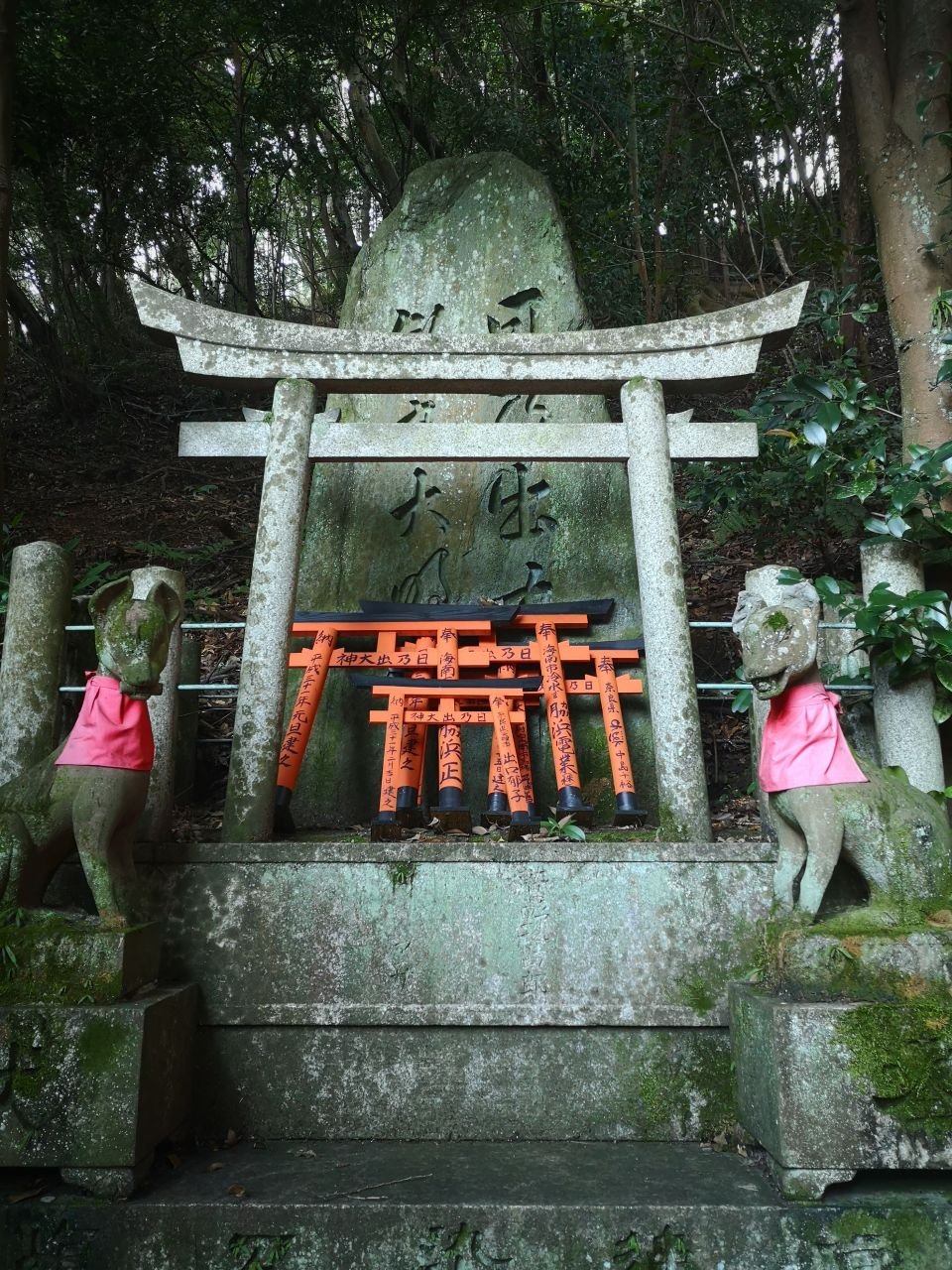
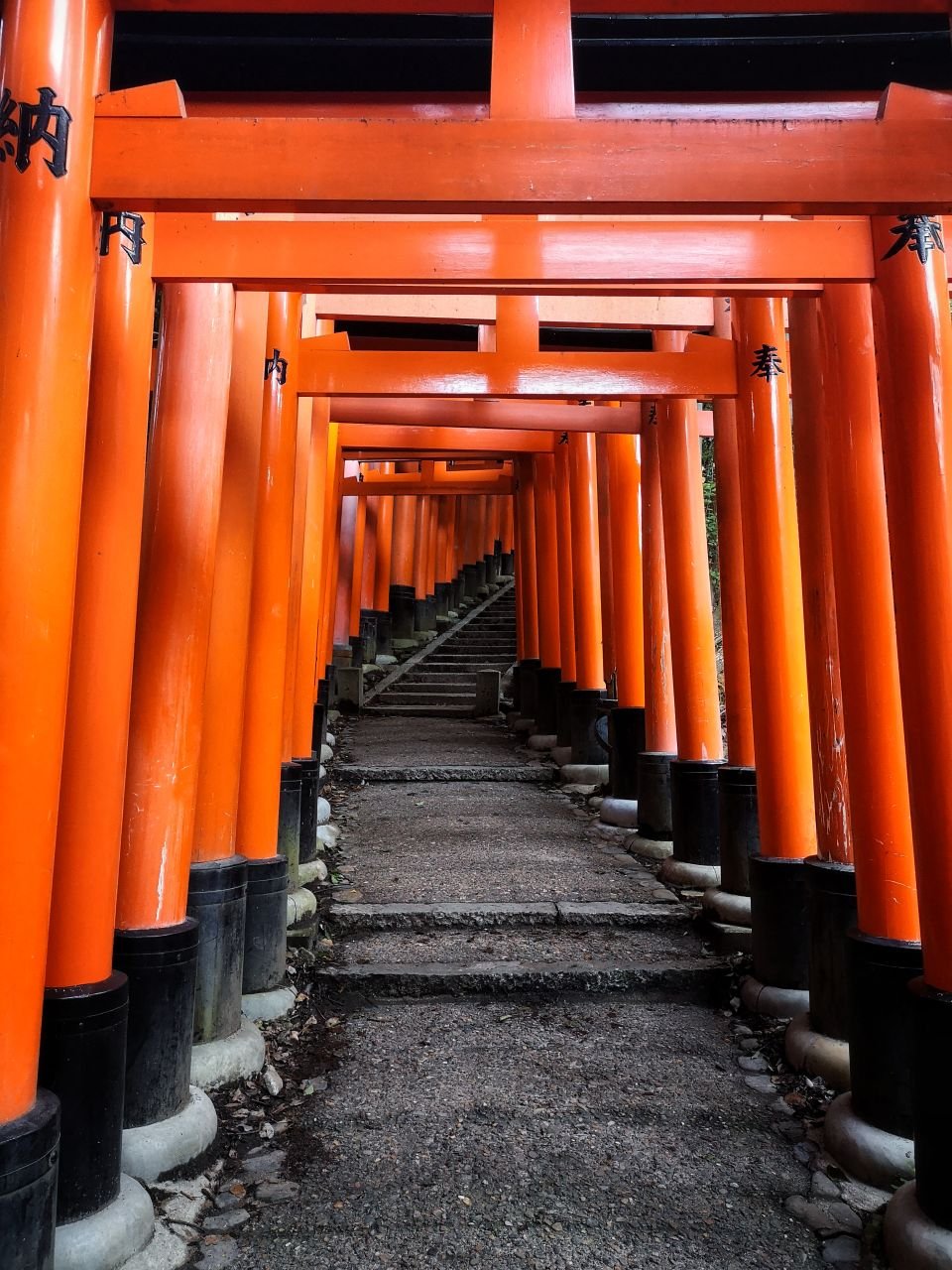
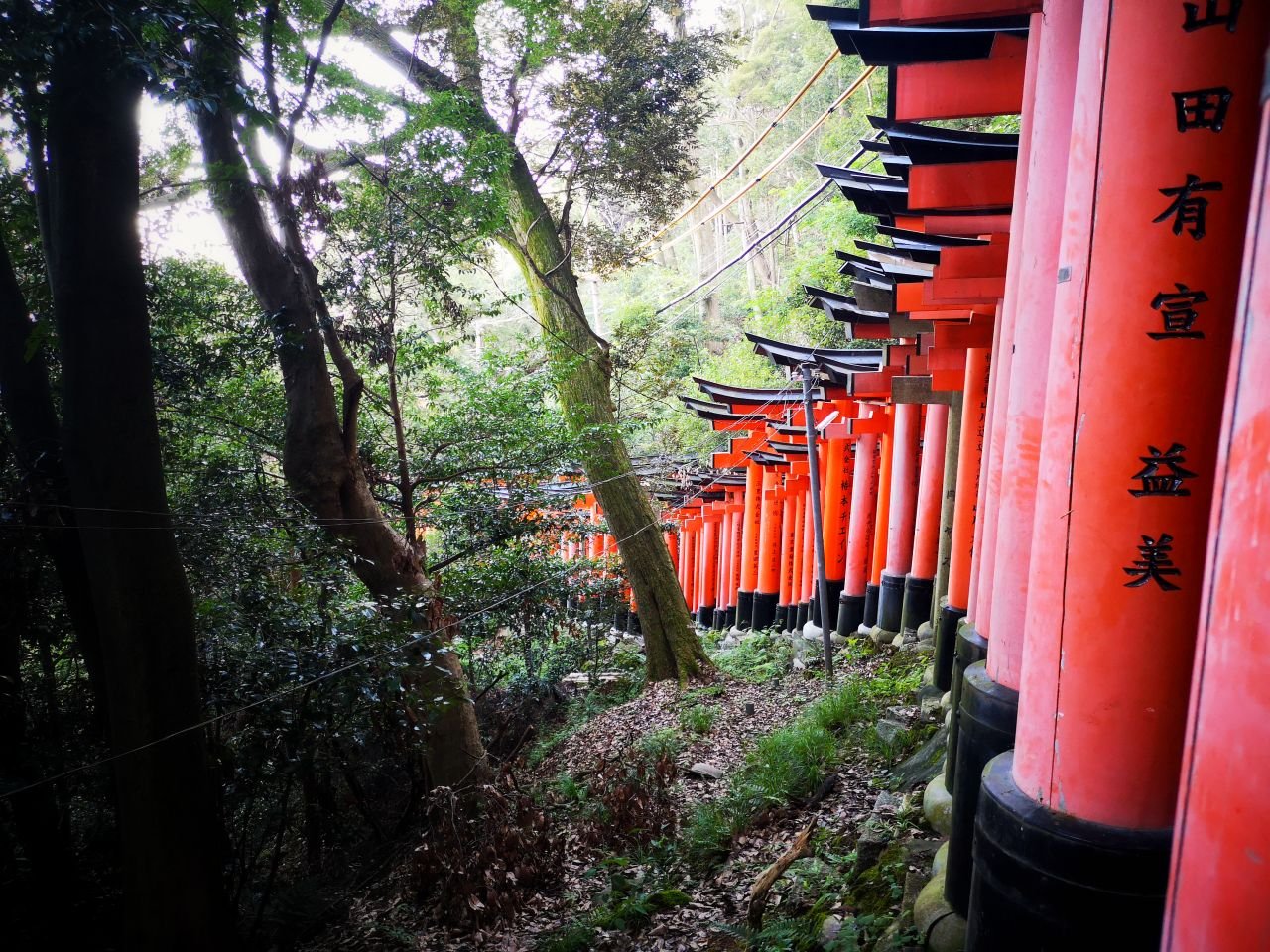


Araki Shrine:
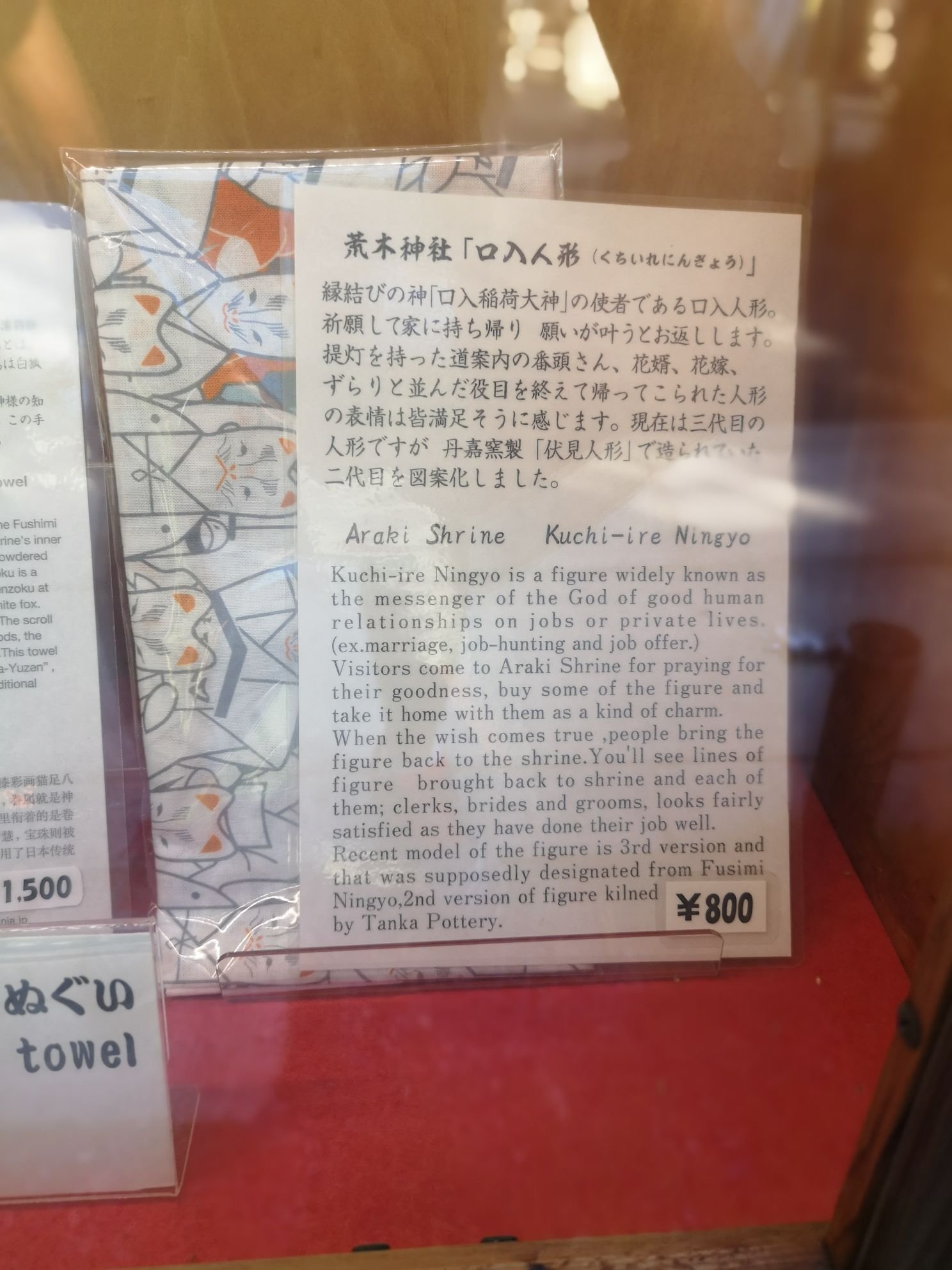
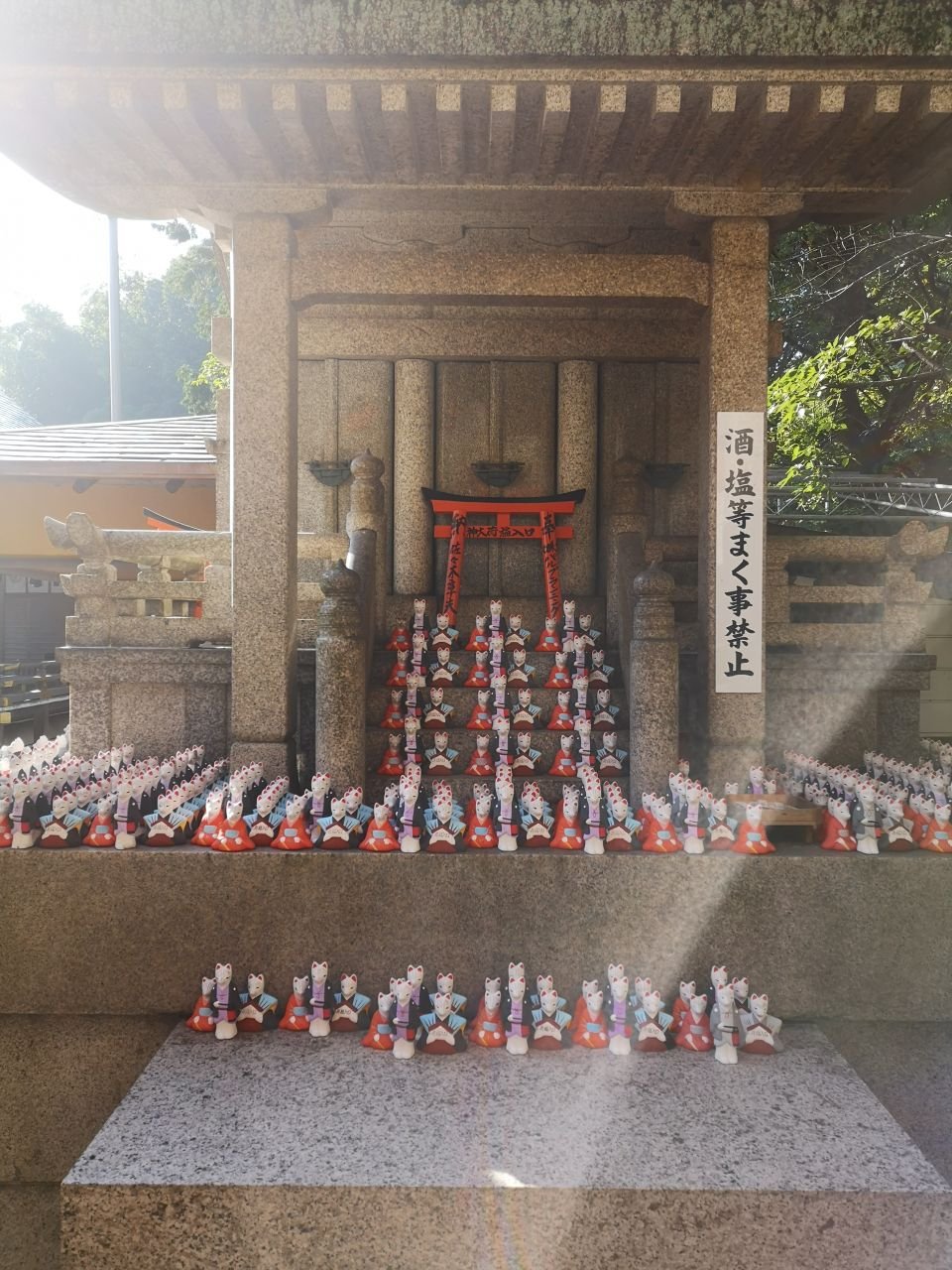
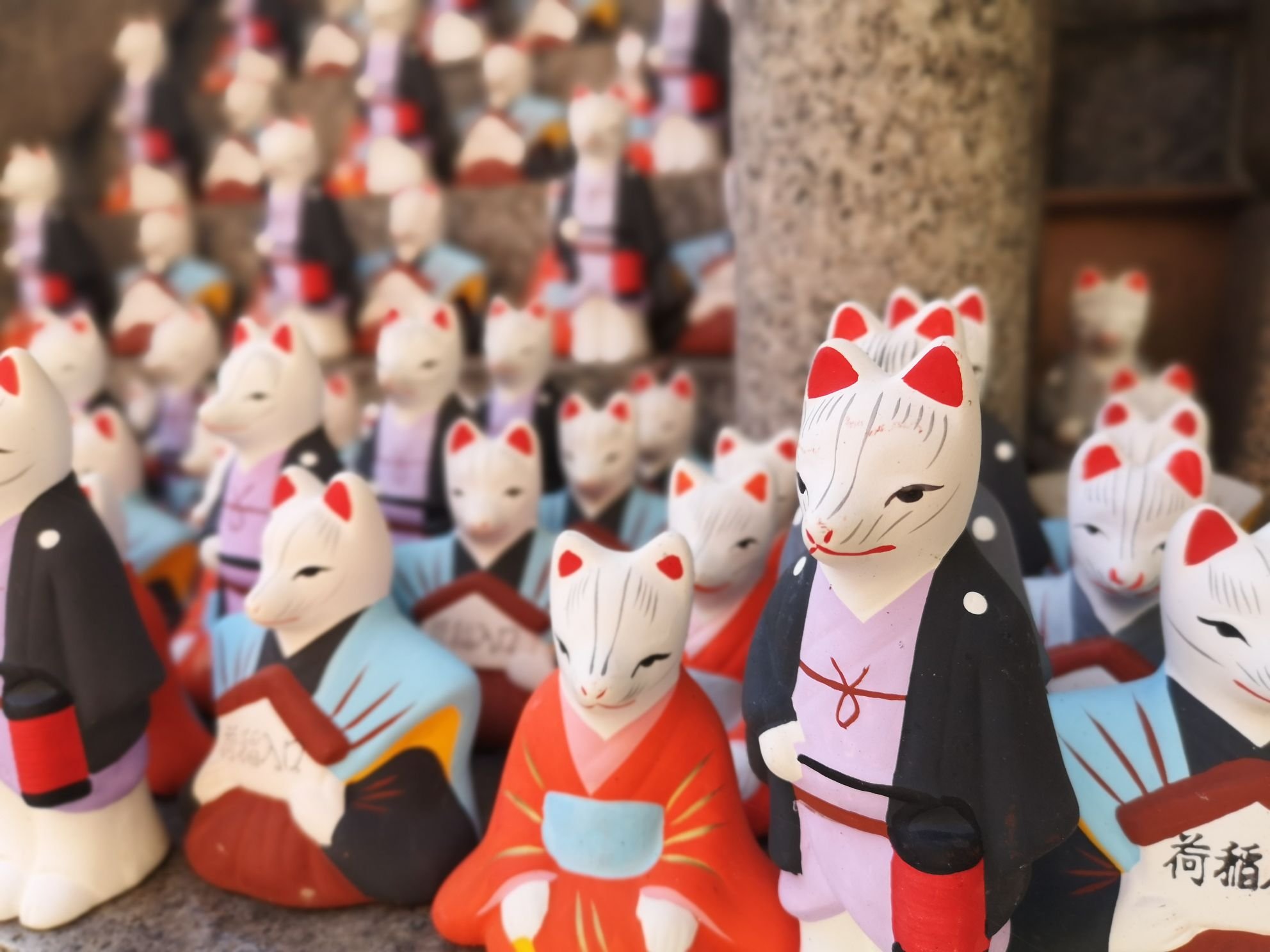
additional sources:
https://www.japan-guide.com/e/e3915.html, accessed: 14.10.2019
https://www.univie.ac.at/rel_jap/an/Bauten/Bekannte_Schreine/Fushimi, accessed: 14.10.2019